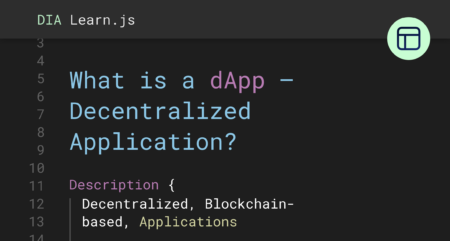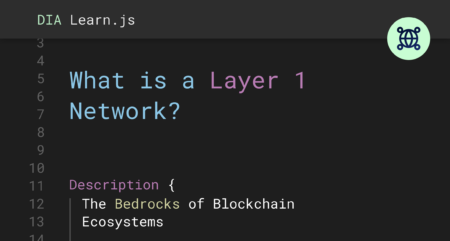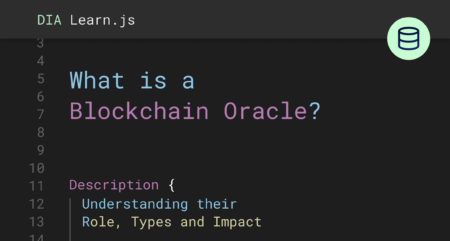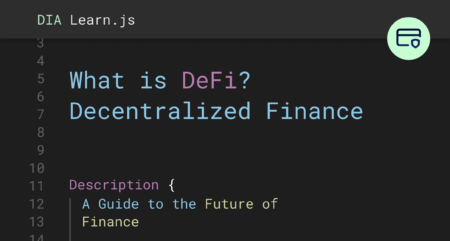What is a Blockchain Node: Insights and Applications
Explore the essentials of blockchain nodes: their types, functions, and impact on blockchain networks, with insights into practical applications.

What Is a Node in Blockchain?
A blockchain node is a critical element of the blockchain network, encompassing any computer that connects to a blockchain network. It plays an integral role in maintaining, validating, and keeping the network up-to-date with the current state of the blockchain.
These can be likened to servers, yet with a notable difference: they have the potential to operate on any household device, like a personal computer (or even a smartphone!), as long as it has sufficient storage capacity (several hundred gigabytes) to accommodate the entire blockchain.
Why are node providers needed?
As Web3 applications grow in complexity and user base, they demand high computational power, vast storage, and uninterrupted connectivity. Node providers alleviate these challenges by ensuring consistent uptime, high-speed data access, and robust security. This support is vital for maintaining the integrity and performance of applications, particularly those handling large volumes of transactions or requiring access to historical blockchain data.
What to look for in a node provider?
At DIA, we have been working with over 10 node providers in the last 5+ years of development of our oracle platform and we have determined the following points to be critical:
- Speed: how fast is the data being retrieved and pushed on-chain?
- Bandwidth: how many parallel requests can the node support for a scalable operation?
- Multi-chain support: in how many L1/L2 are the node services available?
How do Blockchain Nodes Work?
Node Operations
Nodes participate in the network by collecting, storing, spreading, and preserving the blockchain data, ensuring that all transactions are validated and consistent across the network. They verify transactions through a consensus mechanism, checking for the validity and authenticity of each transaction and ensuring that all nodes agree on the state of the blockchain.
Nodes communicate with each other to propagate data across the network. This includes sharing new transactions, blocks, and reaching consensus on the state of the blockchain. Consensus mechanisms like Proof of Work (PoW) and Proof of Stake (PoS) are employed by nodes to agree on the valid state of the blockchain, ensuring security and preventing fraudulent transactions.
Economic Incentives of Nodes
Incentives vary across different blockchain architectures and play a significant role in ensuring the network’s security and efficiency. In many blockchains, especially those utilizing Proof of Work (PoW) or Proof of Stake (PoS) mechanisms, node operators are incentivized through transaction fees and block rewards. Miners in PoW and validators in PoS receive rewards for their contributions to the network’s security and transaction processing.
Example of Ethereum Proof-of-Stake: To run a node on Ethereum, involves validators staking 32 ETH to participate in block validation and proposal. This system requires validators to run three software clients. Validators earn rewards in ETH for honest participation, but face penalties, including loss of staked ETH, for dishonest actions like equivocation or contradictory attestations. Learn more on ethereum.org.
What Are the Different Types of Blockchain Nodes?

Diving into the diverse types of blockchain nodes helps in understanding their unique roles and functionalities within the blockchain network. Each type of node contributes differently to the blockchain’s efficiency and security.
Full Nodes
Full nodes are the backbone of the blockchain network. They maintain a complete copy of the blockchain ledger and validate all transactions and blocks according to the network’s rules. Full nodes branch out into two different categories:
- Archival Full Nodes: These nodes store the complete transaction history of a blockchain, from the genesis block to the latest. They enforce consensus rules and validate transactions. The blockchain can be rebuilt from a single archival full node if needed.
- Mining Nodes (Miners): Active in proof-of-work blockchains, they create new blocks and receive cryptocurrency rewards.
- Staking Nodes (Validators): Found in proof-of-stake blockchains, they validate new blocks. Validators have a stake in the cryptocurrency, deterring dishonest behavior.
- Authority Nodes: Used in partially decentralized networks, these nodes are selected by the network’s entity but perform similar tasks to full nodes.
- Masternodes: While they don’t add blocks, they validate transactions and maintain transaction records.
- Pruned Full Nodes: These are a streamlined version of archival full nodes. They download the entire blockchain, verify it, but then only store recent blocks up to a certain size limit, discarding older data. This reduces storage requirements while still performing the same processes as other full nodes.
Light Nodes
Suited for devices with limited capabilities like laptops and smartphones, light nodes don’t need extensive hardware or high bandwidth. They are used for everyday operations like checking balances or broadcasting transactions. They rely on full nodes for additional information, as they don’t enforce network consensus rules and store only data relevant to their transactions.
Popular Blockchain Node Providers
Node providers offer services that simplify connecting to and interacting with various blockchain networks. Here’s a look at some popular providers.
| Node Provider | Key Features | Supported Networks |
|---|---|---|
| Alchemy | A broad spectrum of tools and products | 9 chains |
| QuickNode | Dedicated IPFS Storage & Gateway | 44 chains |
| Onfinality | Extensive suite of monitoring | 106 networks |
| Blast | Intuitive user interface | 53 networks |
| Chainstack | No rate limits or request number restrictions | 28 chains |
| Ankr | Great global, distributed coverage | 30 chains |
| Infura | Pioneer Ethereum node provider | 10 chains |
Learn more about our experience using Blast in this case study and click here to learn about our experience using Chainstack.
List of nodes per blockchain
Find a curated list of the top blockchain nodes per blockchain networks that we have curated together with the DIA DAO:
How Are Blockchain Nodes Integrated in Different Blockchain Architectures?
Blockchain nodes are integrated differently across various blockchain architectures, each serving distinct purposes and contributing uniquely to the network’s functionality.
- Integration in Public Blockchains: In public blockchains like Bitcoin and Ethereum, anyone can participate as a node, contributing to the network’s security and decentralization.
- Role in Private and Consortium Blockchains: nodes are often restricted to certain participants, playing specific roles in governance, transaction validation, and maintaining the ledger’s privacy.
- Nodes in Hybrid Blockchain Models: Hybrid blockchains combine elements of public and private networks. Nodes in these blockchains have varied roles, balancing between transparency, control, and security.
- Nodes in Advanced Blockchain Networks: Advanced blockchain networks may have specialized nodes with unique functions, such as facilitating faster transactions, providing enhanced privacy features, or supporting smart contracts.
How do Crypto Nodes Support Oracles like DIA
At DIA, as a blockchain oracle provider, we heavily rely on node infrastructure providers, due to our specific architectural needs as a first-party oracle provider. And we do it in two different ways:
On-chain data fetching
To create, for instance, an ETH/USD price feed, DIA uses trade data points from dozens of ETH pairs (ETH/USD, ETH/USDT, ETH/BTC, etc) from various decentralized exchanges where ETH is traded. To effectively pull vast amounts of this trade data from various exchanges (sometimes millions of trades for an asset in 24 hours), DIA requires node providers capable of handling these extensive requirements.
The data collection process involves a substantial number of parallel web socket subscriptions – each representing a liquidity pool where the asset is traded. This is particularly significant for Uniswap fork DEXs, where thousands of parallel connections are common. For a successful operation, at DIA we prioritize finding reliable node providers capable of retrieving trading data simultaneously from hundred of asset pairs, over 50 decentralized exchanges across multiple blockchains.
Pushing data to on-chain
On the other hand, DIA also utilizes blockchain node providers to publish data feeds on the blockchain via a oracle smart contract. Here, having a reliable node partner is indispensable, as in case of failure, can lead to not delivering data and causing severe issues on the dApp level. Therefore, in order to effectively and securely execute these on-chain transactions, DIA has built a robust, decentralized node infrastructure.
Additionally, as a cross-chain and multi-chain oriented oracle, DIA also requires a strong node provider with good coverage and integration layer-1 and layer-2 networks to make its data available across 40+ networks, as DIA currently does.








